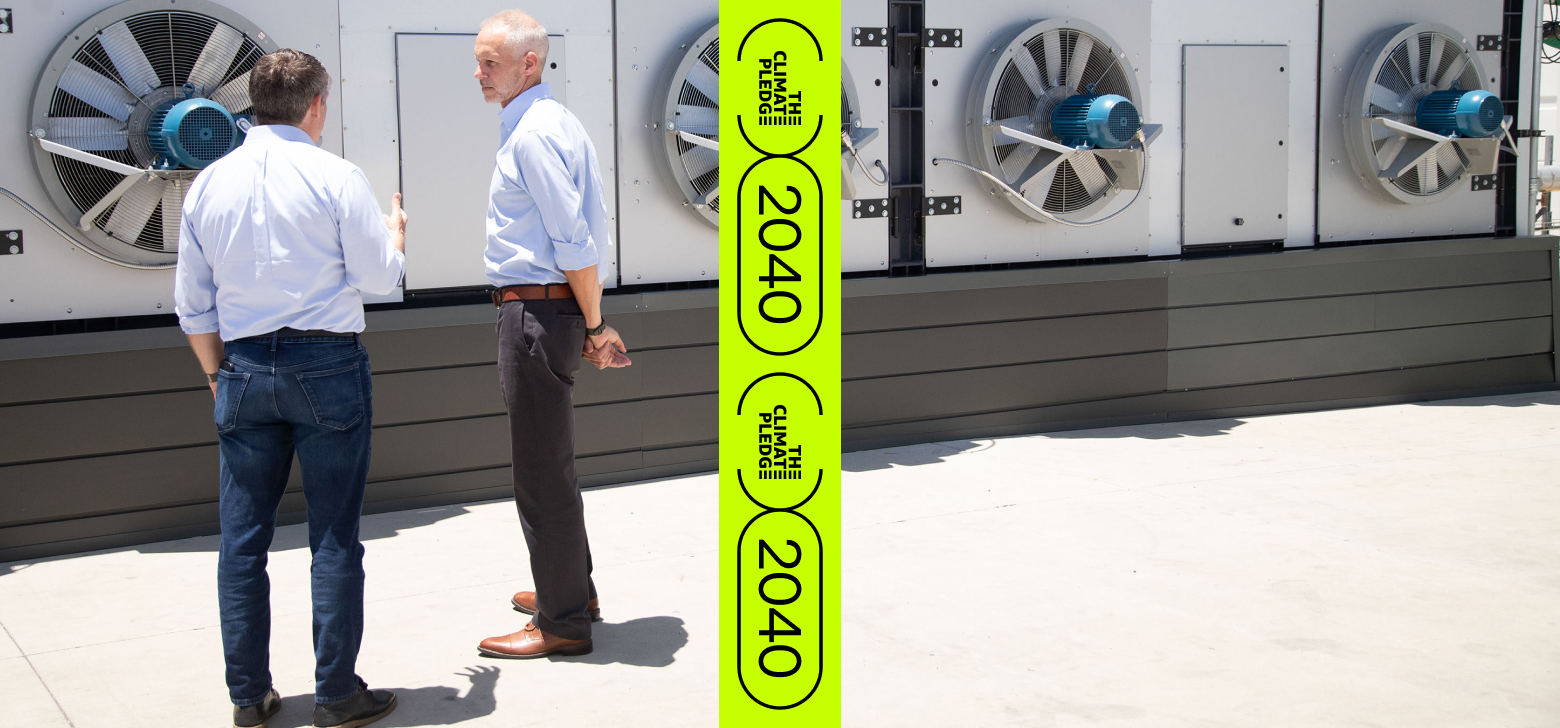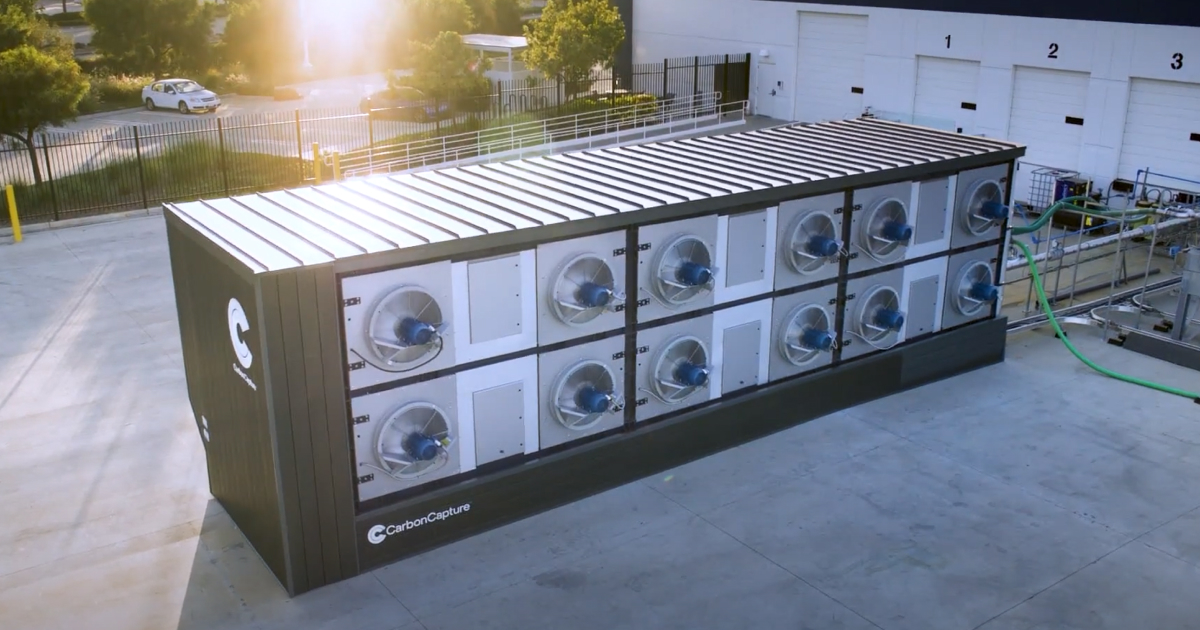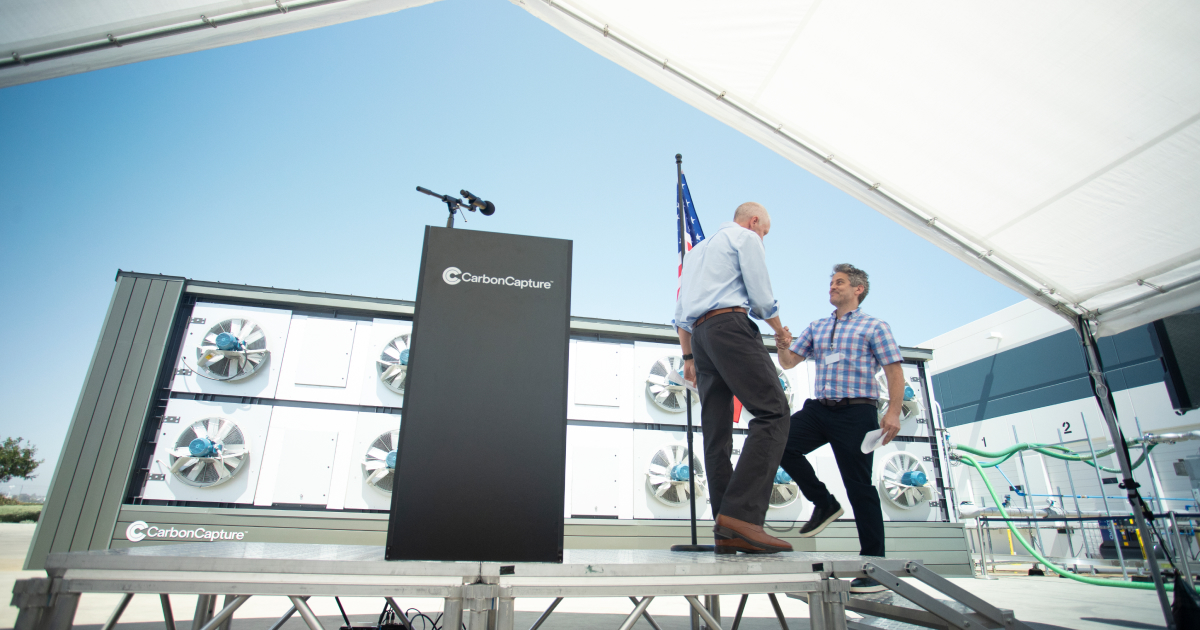While electrifying delivery fleets, adopting lower-carbon building materials, and reducing single-use packaging are essential to achieve Amazon’s commitments through The Climate Pledge, they alone won’t get us to our goal of net-zero carbon emissions by 2040. For that, we’ll need new technologies and solutions that don’t exist today. Nick Ellis is a Principal at Amazon’s $2 billion Climate Pledge Fund (CPF), which is tasked with helping scale start-ups that are inventing and delivering critical decarbonization technologies to market. We caught up with Ellis to discuss how the Climate Pledge Fund helps support Amazon’s decarbonization efforts, and to learn why CPF invested in CarbonCapture Inc., a company that is developing direct air capture technology.
The Climate Pledge: Tell us about The Climate Pledge Fund. What role does it play in catalyzing emerging technologies?
Ellis: The Climate Pledge Fund is Amazon’s $2 billion corporate venture capital fund created in 2020 to help Amazon reach net-zero carbon emissions by 2040. Our mental model is to be both a catalytic investor and a catalytic customer to companies that can help decarbonize Amazon and our value chain. To date, we’ve made 28 investments in companies operating across eight verticals and in over a dozen countries. Arguably, our most recognized investment is Rivian,
which designed and built 13,500-plus Amazon Last Mile electric delivery vehicles.
We’ve also invested in companies that produce alternative fuels that can help reduce emissions for our Middle Mile and Amazon Air fleets, and others that manufacture lower-carbon concrete and steel that can be used to build our future fulfillment and data centers. Some of our more recent investments are focused on decarbonizing packaging and improving material recovery and reuse, which combined have the potential to avoid millions of tons of carbon annually across Amazon. Our hope is that these investments spur other investors and innovators to action, and create a groundswell of solutions to help avoid the worst impacts of climate change.
The Climate Pledge: Last year The Climate Pledge Fund invested in a company called CarbonCapture Inc. (CarbonCapture). What is direct air capture (DAC), and why are you eager to invest in that technology?
Ellis: DAC is an emerging set of technologies that chemically scrub carbon dioxide (CO2) from the air. The captured CO2 is then sequestered or resold to make goods such as concrete or lower-carbon fuels.
Reaching global net-zero emissions by mid-century will require carbon removal to balance out stubborn, hard-to-abate emissions. The Intergovernmental Panel on Climate Change estimates that we'll need to remove 5–10 billion tons of CO2 annually by 2050 to limit global warming to 1.5°C above pre-industrial levels. At Amazon we are interested in direct air capture, alongside nature-based carbon removal like reforestation efforts, as one of the carbon removal technologies capable of scaling up to this level. The urgency of the climate crisis means we need to pursue a wide range of both decarbonization and carbon removal strategies.
We’re excited about the investment in CarbonCapture and other companies that can radically change the cost and timelines for scaled carbon removal. Expect to see more from us on this front in the coming years.




